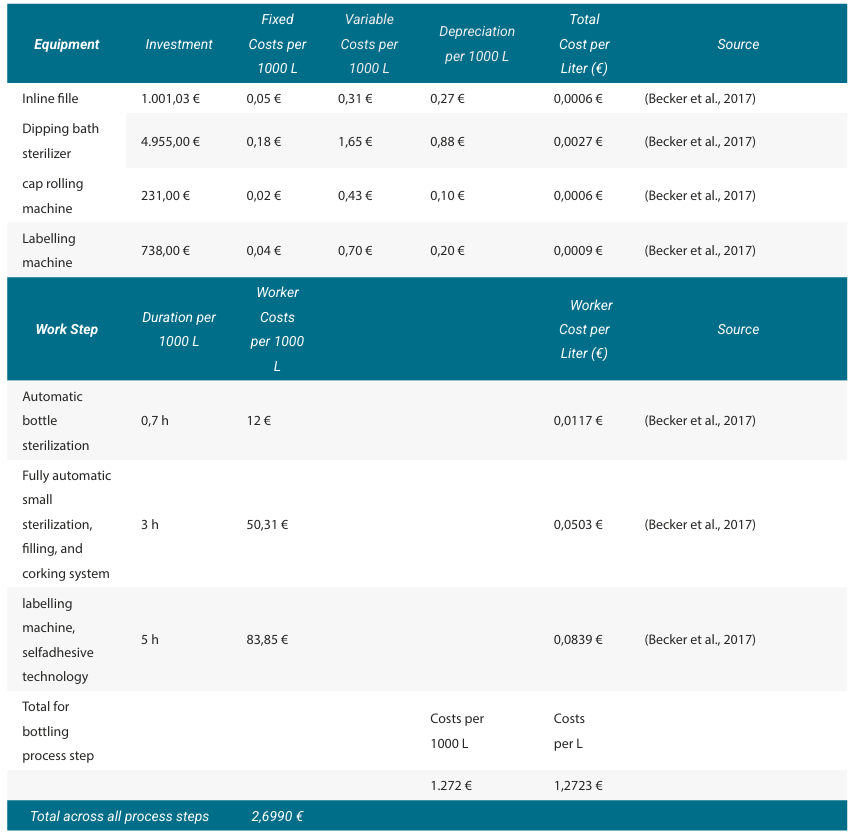Sustainable Use of PiWi Vine Leaves: Life Cycle Assessment and Techno-Economic Analysis of a Novel Vine-Leaf-Based Beverage within the Framework of the Circular Bioeconomy
This study investigates the ecological and economic performance of a novel, alcohol-free beverage derived from the leaves of fungus-resistant (PiWi) grapevines as part of a research project funded by the Federal Ministry of Research, Technology and Space. Using life cycle assessment (LCA) and techno-economic analysis (TEA), the study evaluates both the environmental footprint and the production costs of the beverage across multiple production scenarios. The results indicate that the PiWi-based beverage shows clear ecological advantages compared to already available drinks such as tea based beverages, fermented lemonades, and alcohol-free wine, mainly due to lower pesticide use and energy demand. Economically, production is feasible within competitive cost ranges, especially when existing winery infrastructure is utilized.
Keywords: BioBall, Vine leaves, Capital expenditure (CAPEX), Bioeconomy, Earnings before interest and taxes (EBIT), Earnings before interest, tax, depreciation, and amortization (EBITDA), Operational expenditure (OPEX), Return on investment (RoI), Techno-economic assessment (TEA), Life cycle assessment (LCA), Fungus-resistant grapevines (PiWi), Climate change, Circular economy
Introduction
In recent years, societal and political awareness of climate change and its associated risks have increased significantly (Calculli et al., 2021). This development is reflected in numerous national and international agreements and strategies aimed at curbing climate change and promoting sustainable transformation processes. A central milestone in this regard was the Paris Climate Agreement of 2015, in which the international community agreed to limit global warming to well below 2 °C, ideally to 1.5 °C, compared to pre-industrial levels (Vertragsparteien: Übereinkommen von Paris, 2015). In the same year, the 2030 Agenda with its 17 Sustainable Development Goals (SDGs) was adopted. Particularly relevant for agriculture and climate protection are SDG 2 (“Zero Hunger” – including sustainable agriculture), SDG 12 (sustainable consumption and production), and SDG 13 (climate action) (Bundesministerium für Wirtschaftliche Zusammenarbeit und Entwicklung: Die Agenda 2030 für nachhaltige Entwicklung, n.d.).
At the European level, the European Green Deal (2020) set out a comprehensive strategy that includes the objective of reducing the EU’s net greenhouse gas emissions to zero by 2050. As part of this, the “Fit for 55” package was initiated, which aims to reduce emissions by at least 55% by 2030 compared to 1990 levels. Other central elements include the 2030 Biodiversity Strategy, the Circular Economy Action Plan (Europäische Kommission: Der europäische Grüne Deal, 2021), and the “Farm to Fork” strategy, which calls for, among other things, a 50% reduction in pesticide use and at least a 20% reduction in fertilizer use by 2030 (Food Safety: Farm to Fork Strategy, n.d.). To achieve these far-reaching goals, new concepts are required that combine ecological sustainability with economic innovation. The bioeconomy plays a significant role here, as it represents a forward-looking approach to using biological resources efficiently and sustainably.
The bioeconomy is defined by the Federal Ministry of Research, Technology and Space as “the production, exploitation, and utilization of biological resources, processes, and systems in order to provide products, processes, and services across all economic sectors within a future-oriented economic system” (Federal Ministry of Research, Technology and Space – BMFTR, 2025). Complementarily, Muscat et al. define the circular bioeconomy as a strategy intended to “minimize the consumption of finite resources (e.g., phosphate rock, fossil fuels, or soils), promote regenerative practices (e.g., restoration of fish stocks), prevent the loss of natural resources (e.g., carbon, nutrients, and water), and foster the reuse and recycling of unavoidable by-products, losses, or waste in a way that maximizes added value for the system” (Muscat et al., 2021).
Within this context, the present research project focuses on the use of vine leaves, a raw material that has so far remained unused, thereby providing an ideal example of sustainable utilization concepts. Currently, vine leaves are traditionally preserved in the Mediterranean region through lactic acid fermentation for dishes such as dolmades (Ünver et al., 2007), while in Asia they are mainly consumed as teas (Rana et al., 2022). Beyond their culinary use, vine leaves rank among the most common by-products of viticulture (Maia et al., 2021). Their high content of bioactive compounds, particularly phenolic substances and organic acids, offers not only nutritional benefits but also considerable economic potential (Constantin et al., 2024). Building on this potential, the project seeks to develop an innovative beverage that makes targeted use of these valuable ingredients. In doing so, it not only illustrates the possibility of converting by-products of viticulture into high-quality foods but also serves as a model for sustainable production processes in the wine sector.
These overarching goals and concepts place agriculture, and viticulture in particular, under considerable pressure to transform. Grapevines are considered one of the most pesticide-intensive crops (Chen et al., 2022), as they are highly susceptible to fungal diseases such as powdery and downy mildew (Vella et al., 2024). According to the Pesticide Action Network Europe (2008), vineyards account for only about 3.5% of agricultural land but consume around 15% of the synthetic pesticides used in the EU. A key strategy for reducing pesticide use, according to the German Environment Agency, lies in the increased use of robust plant varieties (Merbold, 2016). In viticulture, this means specifically promoting so called fungus-resistant grapevine varieties (abbreviated PiWi, from the German pilzwiderstandsfähig, or FRW – fungicide-resistant grapevines). These cultivars exhibit genetic resistance, particularly to mildew diseases, and therefore require significantly fewer plant protection measures. Studies show that pesticide use in PiWi varieties can be reduced by up to 80% compared to conventional grapevine varieties (Dressler, 2024; Pedneault & Provost, 2016).
In addition to ecological benefits, reduced pesticide use is also associated with economic and social advantages. According to recent studies, production costs per hectare can be reduced by 46% to 75% (Dressler, 2024). Moreover, the health risks for vineyard workers are minimized due to reduced exposure to pesticides, which in turn has positive effects on working conditions and work-life balance.
Thus, PiWi grape varieties promote all three dimensions of sustainability (Federal Ministry of Research, Technology and Space – BMFTR, 2025):
• Ecological, through reduced pesticide use and the protection of biodiversity,
• Economic, through lower production costs, and
• Social, through improved working conditions.
Despite these potentials, PiWi varieties currently account for only about 3.5% of the total vineyard area in Germany (Deutsches Weininstitut, 2025). According to Duley et al. (2022), barriers include low market acceptance and necessary adjustments in oenological processing due to the differing chemical composition of the grapes (e.g., altered aroma and acid profile) (Duley et al., 2023). Beyond the use of grapes, however, PiWi grapevines offer an underexplored potential for valorisation: their leaves. Considering the challenges associated with grape processing, vine leaves provide an alternative path to value creation that not only contributes to better use of the plant but also enables new, innovative product approaches.
Against this background, the research project funded by the BMFTR aims to develop a novel, predominantly alcohol-free beverage produced specifically from the leaves of fungus-resistant grapevines. The goals are to promote the acceptance of PiWi grapevines, open up new value-creation perspectives, and simultaneously contribute to the circular bioeconomy. Since these leaves contain particularly low levels of pesticide residues due to the reduced need for spraying, they are ideally suited for sustainable utilization. The aim is to generate a high-value product from a previously unused by-product, thereby creating a tangible example of circular bioeconomy in viticulture.
To assess the sustainability and economic viability of the research project, a life cycle assessment (LCA) as well as a techno-economic analysis (TEA) are conducted. The LCA is also recommended by the European Commission (Europäische Kommission, 2003; Europäische Union, 2013) and is a standardized method according to ISO norms 14040 (Deutsche Norm, 2009) and 14044 (Deutsche Norm, 2006) for evaluating environmental performance along the life cycle. The objective of this study is to assess the environmental impact of a beverage made from PiWi vine leaves and to conduct a comparative LCA. In this study, a “cradle-to-gate” approach is chosen, whereby the distribution and use phases are not considered due to uncertainties (Benedetto, 2013). Based on the LCA data, the project is also examined from an economic perspective to analyse the potential additional benefits for wine-growers.
Methods
Life Cycle Assessment
The investigated beverage can be categorized as a fermented lemonade, as it is produced from vine leaves that are first extracted and subsequently fermented. Fermented lemonades are characterized by the conversion of plant-based sugars or extracts through microbial fermentation, resulting in a mildly acidic and non-alcoholic beverage (Jenny, 2019). To ensure a comprehensive assessment within a broader spectrum of fermented and non-alcoholic beverages, it is additionally compared with products from related categories. This approach allows for evaluating its environmental performance not only within its own class but also relative to established reference products.
The environmental impacts of the beverage are assessed through a life cycle analysis using the software openLCA and the databases Ecoinvent v.3.10 (FitzGerald et al., 2024) and, where datasets are missing, Agribalyse. The methodological framework is based on the CML 2016 method (Guinee, 2002). The foreground data required for the inventory are primarily provided by project partners or taken from scientific literature.
The objective of the study is to quantify the potential environmental impacts of producing one liter of the newly developed beverage based on PiWi vine leaves and to identify ecological hotspots along the value chain. In addition, five alternative production scenarios are analysed to evaluate the effects of different design options:
• Scenario 1: German electricity mix and glass bottle packaging (DSM+G)
• Scenario 2: Renewable energy sources and glass bottle packaging (RE+G)
• Scenario 3: PET bottles with the German electricity mix (DSM+PET)
• Scenario 4: Renewable energy sources and PET bottles (RE+PET)
• Scenario 5: Conversion to organic viticulture with glass bottle packaging and German electricity mix (Organic)
Furthermore, a comparison with existing beverages is conducted: a fermented lemonade, a tea-based beverage, and an alcohol-free wine produced by vacuum distillation. The selection of these comparative products follows the criteria “alcohol-free” and “comparable product category.” The process for the fermented lemonade is fully modelled using literature data (Nachhaltigkeitsbericht 2022/23, 2023; De Marco et al., 2016.) For the tea-based beverage, partly manufacturer specific primary data are used and complemented with literature data (Azapagic et al., 2015, Xu et al., 2019). For alcohol-free wine, existing wine production data are combined with a vacuum distillation process simulated in Aspen V.11.
Functional Unit and System Boundary
The functional unit (FU) is defined in all scenarios and comparative processes as one liter of beverage in a ready-to-sell container.
The system boundaries include all relevant processes, from the agricultural production of vine leaves through processing, fermentation, bottling, and packaging, up to the delivery of the final product at the “factory gate.” It is assumed that an already established vineyard exists, which only requires mulching, fertilizing, and spraying (see Fig. 1). The use and end-of-life phases (e.g., cooling, consumption, packaging recycling) are excluded, as no reliable data are available at the time of analysis. Their inclusion would have led to high uncertainty, which is also confirmed by the literature (Bendetto, 2013, Borsato et al., 2019). According to Casolani et al., 33% of the reviewed studies are limited to a cradle-to-gate approach (Casolani et al., 2022).
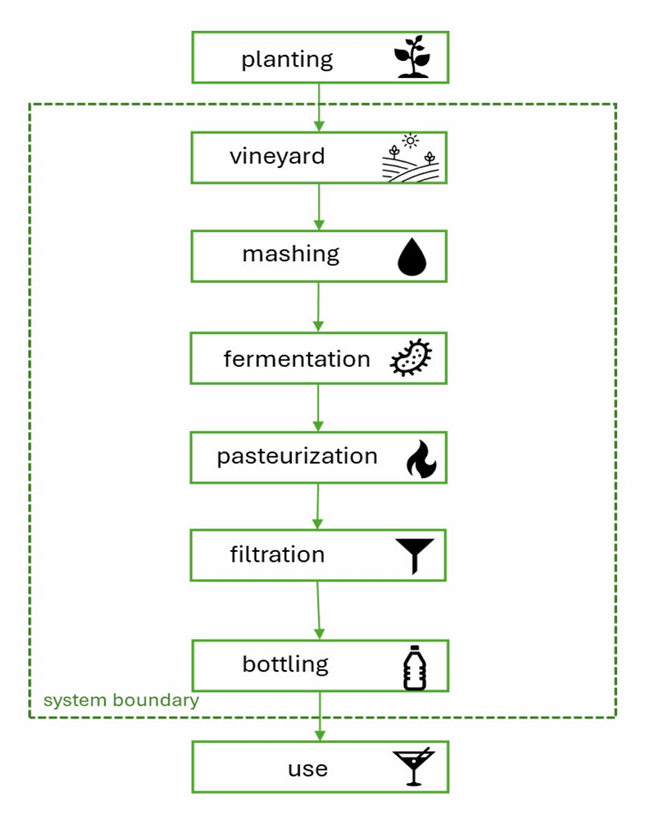
Figure 1. Visualization of the system boundary
Data Collection and Assumptions
The necessary data for all process stages are collected by project partners during the 2023/2024 survey period. Additionally, literature values are used where required, for example for the bottling process (see Appendix).
Agricultural production is based on an existing vineyard that is regularly mulched, fertilized, and treated with pesticides. Transport distances between vineyard, winer, and bottling facility are considered negligible. Leaf pressing results in a 5% liquid loss, while overall process-related liquid losses amount to about 36%, as measured. The product is filtered analogously to wine. Biogenic emissions from fermentation and leaf residues are not included.
To accurately quantify these process flows, the foreground data encompass quantities of fertilizers, sugar, and other input materials, leaf and grape yields per hectare, the amount of ex-tracted and fermentated produced, process losses, as well as the consumption of diesel, water, and electricity. Background data, such as the production and disposal of used inputs and fuels, are represented through appropriate databases.
The use of agricultural machinery is also modelled via background processes, which account for both direct emissions from diesel combustion and the proportional production, maintenance, and disposal of the machines. A separate modelling of these machines within the primary process is not carried out. The same applies to building infrastructures: the construction and maintenance of agricultural buildings and winery facilities are not explicitly modelled but are included in background data.
For the vineyard process step, allocation by volume is applied since both vine leaves and grapes are produced. The allocation of environmental impacts is based on the number of liters of wine and beverage that can be obtained from one hectare of vineyard. This volumetric method is chosen because it reflects the realistic ratio between main and co-products. For packaging, recycled content is considered: glass bottles contain approximately 66% cullet (Wilke, 2024), and PET bottles consist of about 52% recycled material (Schmidt, 2024).
Techno-Economic Analysis
A techno-economic analysis is conducted to assess the economic performance of the developed product. The goal is to determine the production costs of the beverage, perform a static profitability analysis, and identify the main cost drivers along the process chain. The methodological approach follows Activity-Based Costing (ABC), as this method has proven suitable in earlier viticulture studies (González-Gómez & Morini, 2006, Mura et al., 2022b).
The system boundaries of the TEA are consistent with the life cycle analysis (cradle-to-gate), i.e., the analysis considers all production steps from vineyard to delivery of the final product at the factory gate.
The costs of machinery, equipment, and buildings are calculated using the KTBL dataset Viticulture and Winery – Data for Farm Planning (Becker et al., 2017b). Standard values and assumptions provided there are adopted. Both fixed costs (e.g., depreciation, insurance, storage, interest on tied capital) and variable costs are determined per process step based on process duration. For investments and machinery used in both grape and leaf processing, allocation by volume is applied to ensure a fair distribution of costs. This allocation method is used consistently across all relevant process steps. Only in the vineyard stage are operating resources and consumables also allocated.
Personnel costs are calculated based on the working time per task. The basis is a weighted average hourly wage, derived from the statutory minimum wage for seasonal workers (€12.82/h) and the wage for permanent employees (€17.50/h). Assuming that 15% of the workforce are seasonal workers, the weighted average wage is €16.77/h (Becker et al., 2017).
Two scenarios are modelled:
Scenario 1 – Greenfield: assumes full new investments in all machinery, equipment, and buildings. In addition to depreciation, ongoing fixed costs such as insurance premiums, storage, and interest on tied capital are included. The vineyard itself is considered already established.
Scenario 2 – Brownfield: assumes that all capital goods (machinery, buildings, etc.) are already available and fully depreciated. In this case, fixed costs are limited to maintenance, storage, insurance, and technical monitoring.
Results and Discussion
Life Cycle Assessment
In selecting appropriate impact categories, this study follows Ferrara et al. (2018), who identifies the environmental indicators most frequently applied in the literature. Accordingly, the carbon footprint (CF), acidification potential (AP), and eutrophication potential (EP) are considered the central indicators within the wine sector.
The carbon footprint captures the impacts on climate change and is particularly relevant, as it is one of the most used indicators in life cycle assessments (Bendetto, 2013). The acidification potential considers the effects of acidifying substances, which can affect soils, groundwater and surface water, organisms, ecosystems, as well as materials such as buildings. This category is significant in viticulture, as the use of diesel, fertilizers, and other chemicals leads to corresponding emissions. The eutrophication potential assesses the effects of excessive macronutrient inputs on environmental compartments such as air, water, and soil, which arise from the use of fertilizers and pesticides. In addition, the terrestrial ecotoxicity potential (TETP) is analysed separately. It describes the potential harm to soil organisms from toxic substances released during the production pro-cess, particularly from pesticides, herbicides, fungicides, and other agrochemicals (Guinee, 2002; Azapagic et al., 2015). This category is especially relevant in viticulture, as vineyards are intensively managed and the use of such substances is common. Considering TETP therefore enables an assessment of impacts on soil biology and long-term soil fertility.
For the impact assessment, the CML method is applied a midpoint-oriented methodology developed at the Centrum voor Milieukunde of Leiden University (Guinee, 2002). This method is widely used in the wine sector because it directly relates to the typical inputs in vineyards, thereby ensuring both plausibility and comparability with other studies (Ferrara & De Feo, 2018). Figures 2 to 5 illustrate the results of the impact assessment for the selected environmental categories, showing both the contributions of individual process steps to the overall impacts and the comparison between the investigated scenarios and reference processes.

Figure 2. Comparison of Climate Change Results
The comparison of Scenarios 1–5 with the reference processes in the aggregated impact category of climate change shows that all scenarios remain below the CO2 equivalents of the reference products. In Scenarios 1, 2, and 5, bottling represents the largest contribution to climate impact, with energy-intensive glass production accounting for 99% of the environmental effects in this process stage. By substituting glass with PET, Scenario 3 achieves a reduc-tion of approximately 56.2% in CO2 equivalents compared to Scenario 1; however, this effect is strongly dependent on the chosen system boundaries. When additional life cycle phases such as distribution and disposal are included, the differences between glass and PET bottles diminish, particularly in the case of reusable glass (Ferrara et al., 2021).
Another significant contribution to climate impact arises in the vineyard process, primarily due to diesel consumption and related emissions, a finding that has already been confirmed in numerous wine LCA studies (Fusi et al., 2013; Benedetto, 2013; Navarro et al., 2016). In Scenario 5, the reduced pesticide uses leads to fewer tractor operations and thus to lower environmental burdens in the vineyard. The use of renewable electricity in Scenarios 2 and 4 reduces CO2-equivalents by 0.06 kg, primarily in the cellar processes of pasteurization and infusion. This finding is also reflected in previous studies (Navarro et al., 2016; Fusi et al., 2013).
For the reference processes, a more differentiated picture emerges in the fermented lemonade, the largest share of emissions originates from glass production (45%), followed by malt production (28%). In the tea-based beverage, glass production likewise dominates (47%), while electricity generation accounts for the second largest share at 36%. For alcohol-free wine, by contrast, 56% of CO2 emissions result from electricity generation. Overall, the five PiWi beverage scenarios perform best in the climate change impact category and consistently Terrestrial ecotoxicity describes the potential toxic effects of chemicals such as as pesticides and fertilizers on terrestrial ecosystems and uses p-dichlorobenzene (DCB) as the reference substance (Gemeinsame Forschungsstelle: Institut für Umwelt und Nachhaltigkeit, 2010). In Scenarios 1–4, the vineyard process is the dominant factor, contributing approximately 90% of the total environmental impact. The primary cause is the direct emissions resulting from the application of fertilizers and plant protection products. Under organic viticulture, terrestrial ecotoxicity can be reduced by about 86.2% (in kg 1,4-DCB equivalents) due to the substan-tially lower use of synthetic pesticides.

Figure 3. Comparison of Terrestrial Ecotoxicity Results
In the case of the reference processes, 61% of the 1,4 DCB equivalents for the fermented lemonade originate from malt production. For the tea-based beverage, glass production dominates with a share of 45%, while in alcohol-free wine, direct emissions account for the largest contribution at 89%.
A comparison with the results of a systematic review of wine life cycle assessments shows that the present results, except for alcohol-free wine, fall within the lower range of values reported for terrestrial ecotoxicity. The review reports a range of 0.013 to 0.93 kg 1,4-DCB eq. per liter of wine. As confirmed in the present analysis, the findings of Jourdaine et al. indicate that the level of terrestrial ecotoxicity strongly depends on the amount and type of pesticide applied. This relationship explains the large variability observed in the reported values (Jourdaine et al., 2019).
Acidification potential primarily results from emissions of nitrogen oxides, sulfur dioxide, and ammonia (Gemeinsame Forschungsstelle: Institut für Umwelt und Nachhaltigkeit, 2010). Similar to the category „climate change,“ bottling is the dominant contributor, with glass production playing a decisive role in particular. In the vineyard, diesel consumption and pesticide production significantly contribute to acidification.
For the fermented lemonade, the largest share of SO2 equivalents stems from malt production (38%). For the tea-based beverage, glass production dominates with 52%, whereas in alcohol-free wine, electricity generation accounts for the highest contribution (42%).
Compared to the reference products, the PiWi beverage shows the lowest environmental impacts in the impact category acidification potential. Overall, the results are in line with previous wine LCAs. The reported values range from 0.027 kg SO2 equivalents per liter of wine (Point et al., 2012), 0.016 kg SO2 equivalents per liter of wine (Benedetto, 2013), down to 0.00209 kg SO2 equivalents per liter of wine (García et al., 2023).
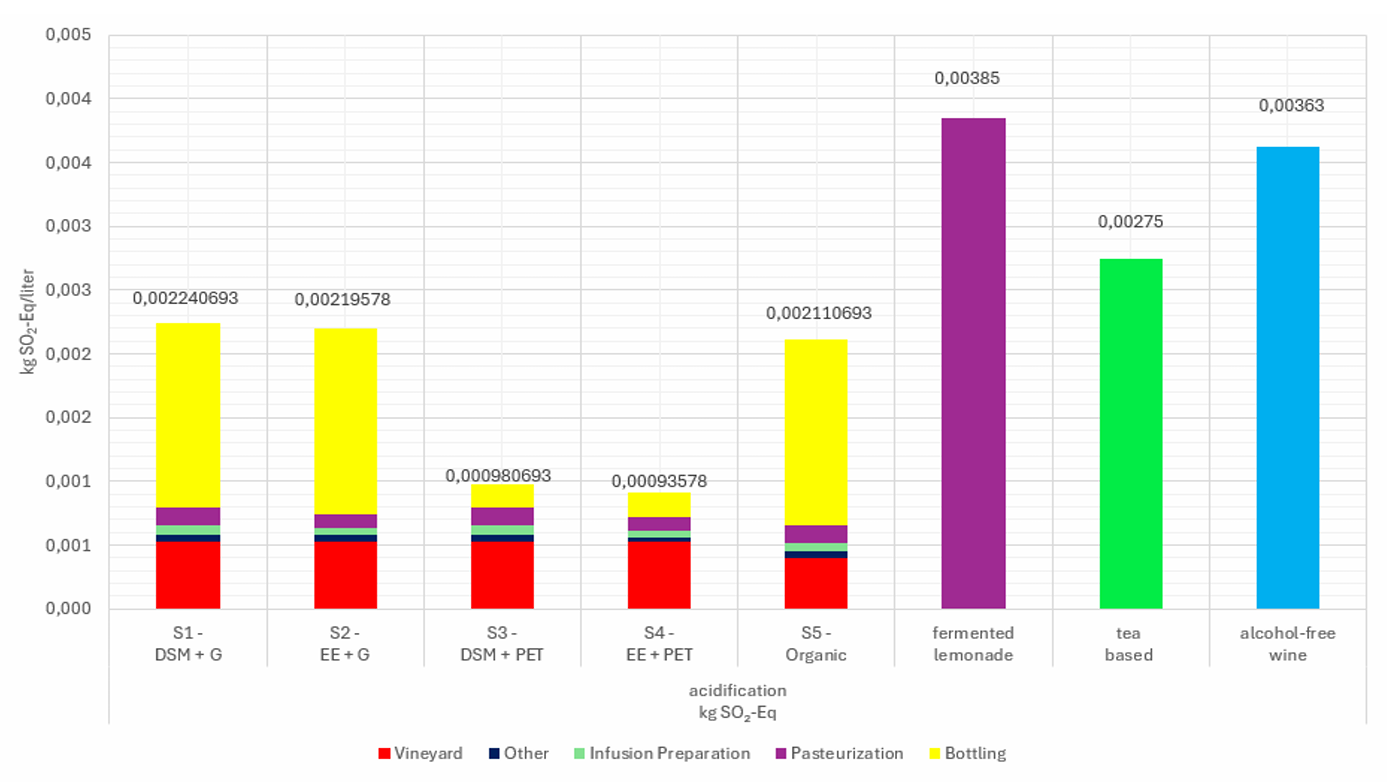
Figure 4. Comparison of Acidification Potential Results
Eutrophication is primarily caused by emissions of nitrogen and phosphorus compounds (Joint Research Centre: Institute for Environment and Sustainability, 2010). Across the five scenarios under study, the overall impacts differ only slightly. This is mainly due to process-specific factors: in bottling with glass containers, polyethylene film used for transport contributes notably to the burden, whereas in PET packaging, the production of terephthalic acid plays a significan role. In the vineyard, the largest share results from the direct emissions of fertilizers and pesticides.
For the reference processes, most PO4-equivalents in the fermented lemonade stem from malt production (52%). In the tea-based beverage and alcohol-free wine, electricity generation dominates, accounting for 45% and 56%, respectively.
A comparison of the PiWi beverage and the reference processes with published wine LCAs shows that, except for alcohol-free wine, these results fall mostly at the lower end of the reported range. For instance, Benedetto et al. determine a eutrophication potential of 0.002 kg PO4 eq per liter of wine (Benedetto, 2013), whereas Point et al. report a significantly higher value of 0.0081 kg PO4 eq per liter of wine (Point et al., 2012).
The analysis shows that the innovative leaf based beverage demonstrates a significantly better environmental performance in almost all investigated scenarios compared to the selected reference products – non-alcoholic beer, tea-based beverage, and non alcoholic wine. In contrast to the reference products, where the largest environmental impacts stem from energy-intensive processes such as tea production, malt production, or vacuum rectification, the PiWi beverages benefit from several key factors. On the one hand, the use of PiWi vines significantly reduces pesticide application, which also lowers diesel consumption for plant protection measures, and the production itself is comparatively low in electricity consumption, avoiding further emissions.
The scenario analysis illustrates how different design options influence environmental impacts. Although the use of renewable energy has a relatively minor effect overall, it can none-theless relieve cellar processes in particular. Under organic cultivation (Scenario 5), terrestrial ecotoxicity and other agriculture-related impacts are reduced most substantially. Overall, it becomes evident that the combination of PiWi vines, sustainable energy supply, and organic viticulture markedly improves the beverage’s environmental performance across all categories.
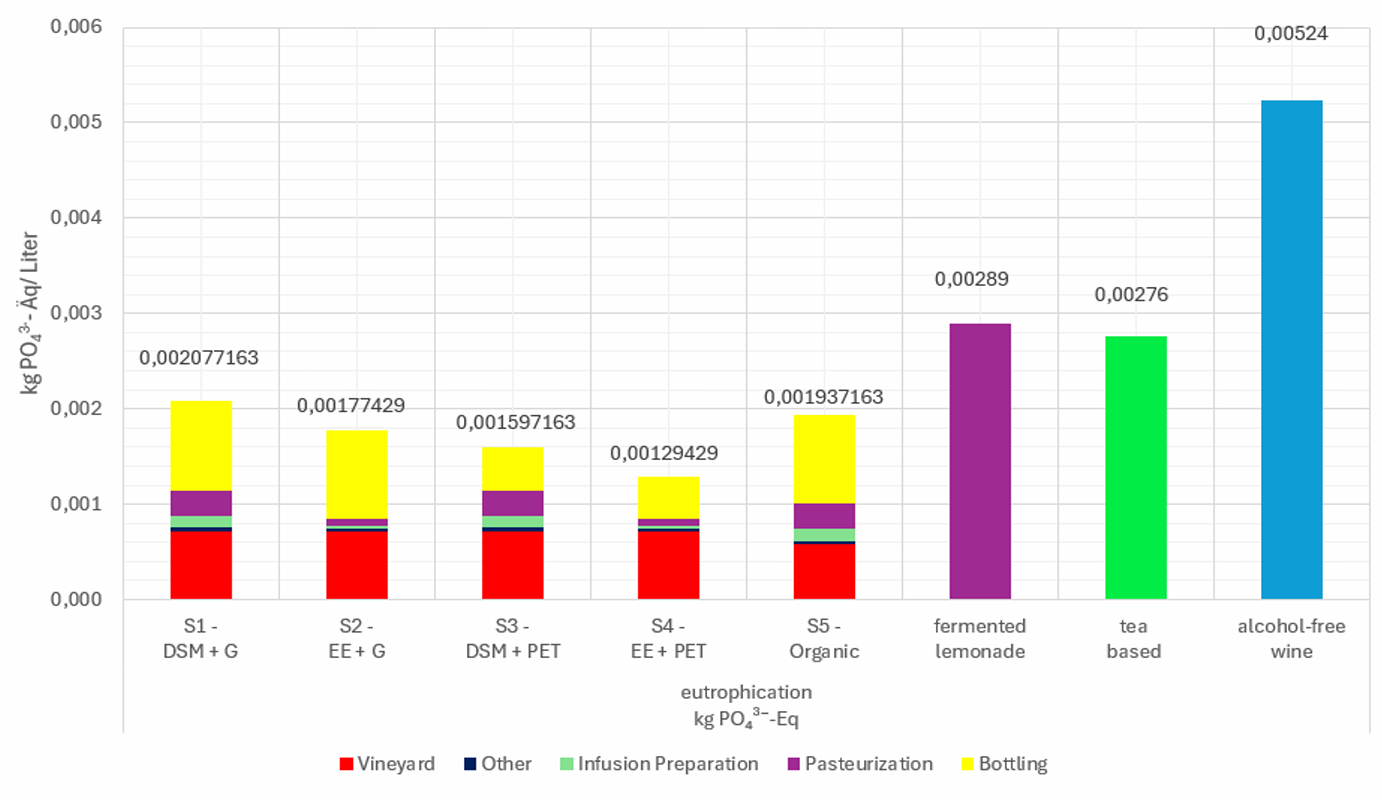
Figure 5. Comparison of Eutrophication Results
Techno-Economic Analysis
For the evaluation of the techno-economic analysis, a cost structure analysis is first conducted to identify the main cost drivers in each scenario.
In the Brownfield scenario, depreciation is entirely eliminated, which removes the previously dominant cost driver in the vineyard process step (-€0.35 per liter). In the overall cost structure, this leads to a relative shift: variable costs now account for 94.9%, forming the almost sole cost component, while fixed costs make up only 5.1% (cf. Fig. 7). For the cellar operations and bottling process steps, however, no significant changes occur. In the Greenfield scenario (Scenario 1), variable costs dominate, accounting for 82.53% of the total production costs, followed by depreciation (13%) and fixed costs (4.5%). A detailed examination of the individual process steps (see Fig. 6) shows that the last step of bottling con-tributes the largest share of costs. This is primarily due to the high material costs (88.2%), with the glass bottle alone representing 54.3% of the total costs in this process step.
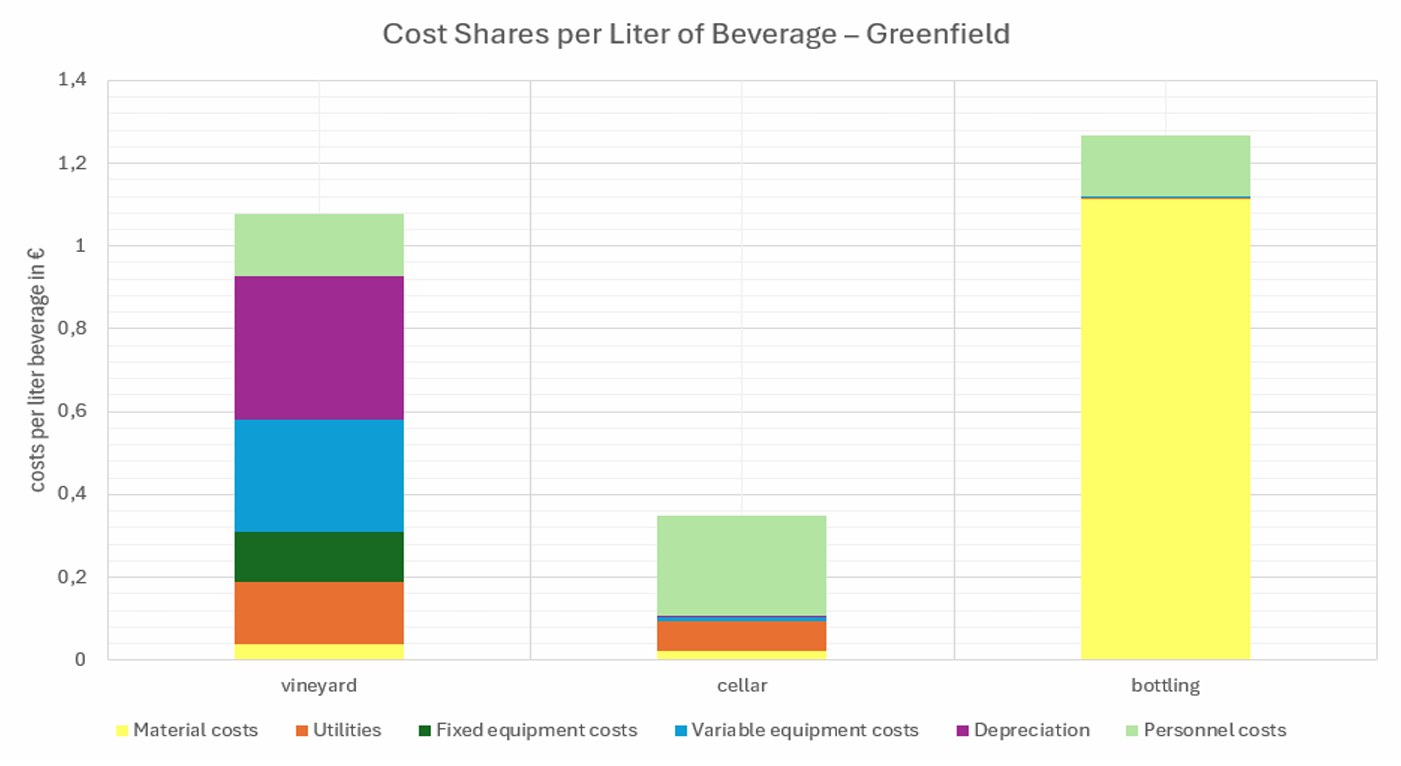
Figure 6. Share of costs per liter of beverage in the greenfield scenario
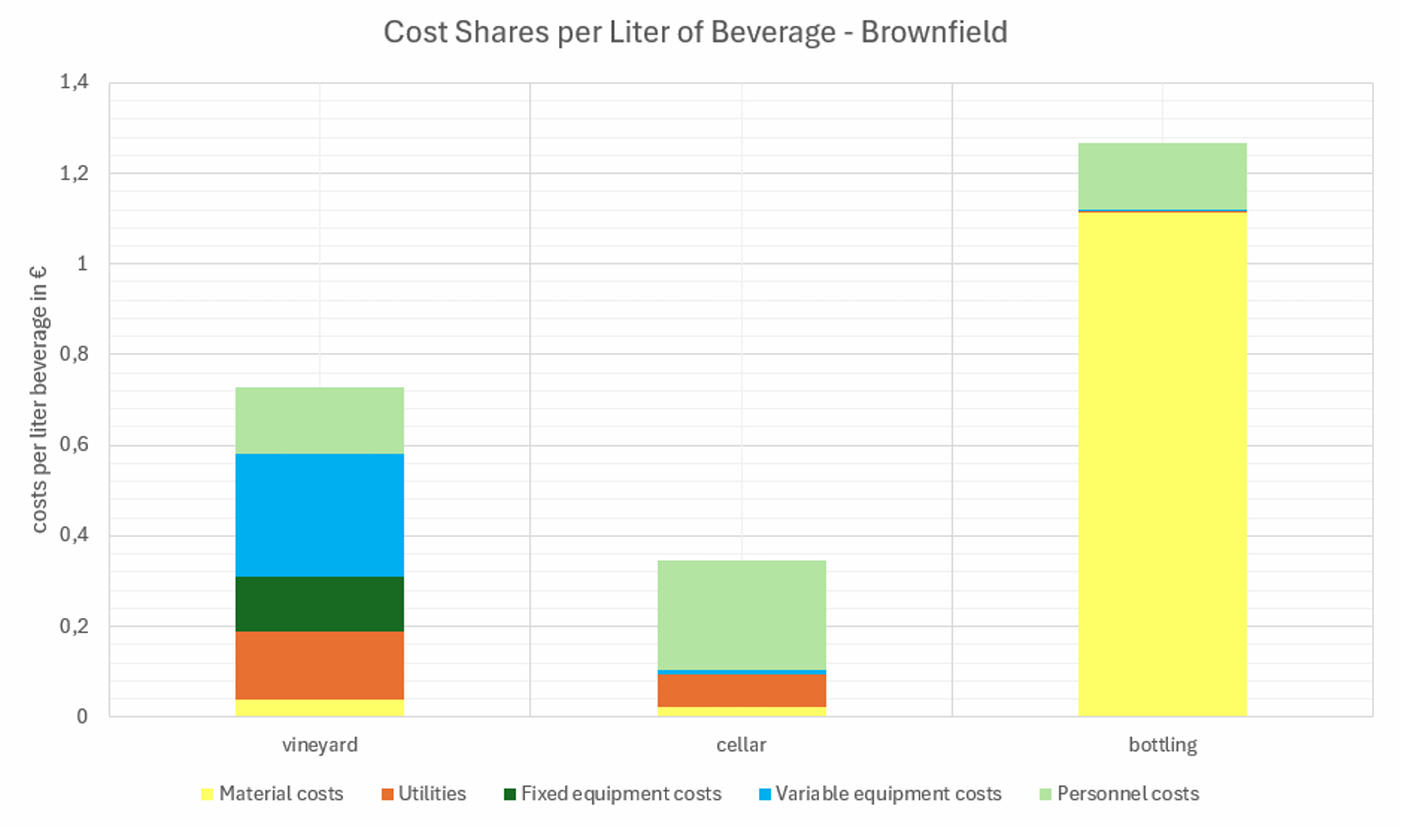
Figure 7. Share of costs per liter of beverage in the brownfield scenario
In the vineyard process step, the focus is on variable machinery costs (25%) as well as depreciation (32.4%). This structure reflects the high machinery intensity of the work, as described in the relevant literature (Zhang & Rosentrater, 2019; Marone et al., 2017). In contrast, the cellar operations are primarily characterized by personnel costs (68.6%), which is attributable to the high worker intensity of this activity.
To assess profitability, a static economic analysis is conducted. The selling price is set at €10 per liter, based on market-standard wine prices (Weinkenner, 2018). Using a yield of 688.62 L/ha, potential revenue and key performance indicators (contribution margin, EBITDA, EBIT, ROI, payback period) are determined. In the Brownfield scenario, due to the absence of depreciation, both ROI and payback period are not applicable (cf. Table 1).
Table 1: Comparison of TEA results for the Greenfield and Brownfield scenarios

In summary, the analysis shows that both scenarios, depending on the scale of the facility, offer an economically positive outlook. A profit of €5,032.91 (Greenfield) or €5,274.97 (Brownfield) can be achieved per hectare. The project can thus be considered a profitable supplementary option to traditional wine sales.
Summary
This project investigates the use of PiWi vine leaves as a basis for a fermented, non-alcoholic beverage and demonstrates that this production option is advantageous both environmentally and economically. The environmental assessment, conducted through LCA, identifies the carbon footprint (CF), acidification potential (AP), eutrophication potential (EP), and terrestrial ecotoxicity potential (TETP) as the central impact categories, which are particularly relevant in viticulture due to the use of diesel, fertilizers, and pesticides.
The results show that all five investigated production scenarios of the PiWi beverage score below the reference beverages (fermented limonade, tea-based drink, non-alcoholic wine) in the environmental categories of climate change, acidification, and eutrophication. Notably, the effect of organic PiWi vines in the organic cultivation scenario reduces terrestrial ecotoxicity by approximately 86%. The largest environmental impacts arise from bottling, particularly glass production, and from vineyard operations due to diesel and pesticide use. Scenarios using PET bottles and renewable energy sources demonstrate further potential savings.
The techno-economic analysis shows that production costs are competitive. In the Greenfield scenario, variable costs account for the largest share, with bottling representing the highest individual cost factor. In the Brownfield scenario, the cost structure shifts toward variable costs, as depreciation is eliminated. At a selling price of €10 per liter, the profit per hectare is substantial (Greenfield: €5,032.91; Brownfield: €5,274.97), qualifying the project as an economically attractive complement to traditional wine sales.
Overall, the research project offers a new beverage concept that combines ecological benefits with economic profitability. At the same time, it demonstrates how principles of circular economy and bioeconomy can be implemented in the beverage industry by utilizing by-products from leaf production and reducing pesticide use. The study therefore provides concrete recommendations for a resource-efficient, environmentally friendly, and marketable production of non-alcoholic fermented beverages.
Acknowledgments
We thank BRAIN AG for their technical support and the “Bundesministerium für Forschung, Technologie und Raumfahrt“ for financial support.
References
Azapagic, A., Bore, J., Cheserek, B., Kamunya, S., & Elbehri, A. (2015): The global warming potential of production and consumption of Kenyan tea, Journal of Cleaner Production, 112, pp. 4031–4040.
Becker, A., Dietrich, J., Fröba, N., Huber, G., Kohl, E., Kranich, H., Krolla, A., Michelfelder, U., Plewe, W., Reinhold, C., Sauer, E., Sauer, N., Schroers, J. O., Schwingenschlögl, P., Walg, O., Wechsler, B., & Zänglein, M. (2017): Weinbau und Kellerwirtschaft: Daten für die Betriebsplanung.
Benedetto, G. (2013). The environmental impact of a Sardinian wine by partial Life Cycle Assessment. Wine Economics and Policy, 2 (1), pp. 33–41.
Borsato, E., Giubilato, E., Zabeo, A., Lamastra, L., Criscione, P., Tarolli, P., Marinello, F., & Pizzol, L. (2019): Comparison of Water-focused Life Cycle Assessment and Water Footprint As-sessment: The case of an Italian wine, The Science of the Total Environment, 666, pp. 1220–1231.
Bundesanstalt für Landwirtschaft und Ernährung. (2024): Bericht zur Markt- und Versorgungslage Zucker – 2024, retrieved from https://www.bmel-statistik.de/fileadmin/daten/0611050-2024.pdf, accessed 05.09.2025.
Federal Ministry of Research, Technology and Space – BMFTR (2025): Nationale Bioökonomiestrategie, retrieved from https://www.bmbf.de/SharedDocs/Publikationen/DE/7/31576_Nationale_Biooekonomiestrategie_Langfassung.html, accessed 10.04.2025
Bundesministerium für Wirtschaftliche Zusammenarbeit und Entwicklung: Die Agenda 2030 für nachhaltige Entwicklung, retrieved from https://www.bmz.de/de/agenda-2030, accessed 10.04.2025.
Calculli, C., D’Uggento, A. M., Labarile, A., & Ribecco, N. (2021): Evaluating people’s awareness about climate changes and environmental issues: A case study. Journal of Cleaner Pro-duction, 324, 129244. https://doi.org/10.1016/j.jclepro.2021.129244
Casolani, N., D’Eusanio, M., Liberatore, L., Raggi, A., & Petti, L. (2022): Life Cycle Assessment in the wine sector: A review on inventory phase, Journal of Cleaner Production, 379, 134404.
Chen, Y., Herrera, R. A., Benitez, E., Hoffmann, C., Möth, S., Paredes, D., Plaas, E., Popescu, D., Rascher, S., Rusch, A., Sandor, M., Tolle, P., Willemen, L., Winter, S. & Schwarz, N. (2022): Winegrowers’ decision-making: A pan-European perspective on pesticide use and interrow management, Journal Of Rural Studies, 94, pp. 37–53.
Constantin, O. E., Stoica, F., Rațu, R. N., Stănciuc, N., Bahrim, G. E. & Râpeanu, G. (2024): Bioactive Components, Applications, Extractions, and Health Benefits of Winery By-Products from a Circular Bioeconomy Perspective: A Review, Antioxidants, 13 (1), 100.
De Klein, C., New Zealand, Novoa, R. S. A., Chile, Ogle, S., USA, Smith, K. A., UK, Rochette, P., Canada, Wirth, T. C., USA, McConkey, B. G., Canada, Mosier, A., USA, & Rypdal, K., Nor-way. (2006): Chapter 11: N2O Emissions from Managed Soils, and CO2 Emissions from Lime and Urea Application, In 2006 IPCC Guidelines for National Greenhouse Gas Inventories, re-trieved from https://www.ipcc-nggip.iges.or.jp/public/2006gl/pdf/4_Volume4/V4_11_Ch11_N2O&CO2.pdf, accessed 05.09.2025.
De Marco, I., Miranda, S., Riemma, S., & Iannone, R. (2016): Life cycle assessment of ale and lager beers production, DOAJ (DOAJ: Directory of Open Access Journals), 49.
DEUTSCHE NORM, Normenausschuss Grundlagen des Umweltschutzes (NAGUS) im DIN, & DIN Deutsches Institut für Normung e.V. (2009): Umweltmanagement – Ökobilanz – Grundsätze und Rahmenbedingungen, retrieved from https://www.din.de, accessed 05.09.2025.
DEUTSCHE NORM, Normenausschuss Grundlagen des Umweltschutzes (NAGUS) im DIN, & DIN Deutsches Institut für Normung e.V. (2006): Umweltmanagement – Ökobilanz – Anfor-derungen und Anleitungen, retrieved from https://www.h2.de/fileadmin/user_upload/Einrichtungen/Hochscehulbibliothek/Downloaddateien/DIN_EN_ISO_14044.pdf, accessed 05.09.2025
Deutsches Weininstitut (2025): Neue Rebsorten weiter im Aufwind, retrieved from https://www.deutscheweine.de/news-medien/meldungen/meldung/1445/neuerebsorten-weiter-im-aufwind, accessed 10.04.2025
Dinkel, F., Kägi, T., & Carbotech AG. (2014): Ökobilanz Getränkeverpackungen. In Bundesamt für Umwelt Schweiz, Bundesamt für Umwelt, Eidg. Departements für Umwelt, Verkehr, Energie und Kommunikation, & Carbotech AG, Ökobilanz Getränkeverpackungen (pp. 7–133) [Report].
Dressler, M. (2024): Meeting Market and Societal Ambitions with New Robust Grape Varietals: Sustainability, the Green Deal, and Wineries’ Resilience, Agriculture, 14 (12), 2138.
Duley, G., Ceci, A. T., Longo, E. & Boselli, E (2023): Oenological potential of wines produced from disease resistant grape cultivars, Comprehensive Reviews in Food Science and Food Safety, 22 (4), pp. 2591–2610.
Europäische Kommission (2003): Integrierte Produktpolitik – Auf den ökologischen Lebenszyklus Ansatz aufbauen, KOM 302 final, retrieved from https://eur-lex.europa.eu/legal-content/DE/TXT/?uri=CELEX:52003DC0302, accessed 05.09.2025.
Europäische Kommission (2021, 14. Juli): Der europäische Grüne Deal Europäische Kommission, retrieved from https://commission.europa.eu/strategy-and-policy/priorities-2019-2024/european-green-deal_de, accessed 10.04.2025.
Europäische Union, (2013): Amtsblatt der Europäischen Union, L 124, retrieved from https://eur-lex.europa.eu/legal-content/DE/TXT/PDF/?uri=OJ:L:2013:124:FULL, accessed 05.09.2025.
Ferrara, C., & De Feo, G. (2018): Life Cycle Assessment Application to the Wine Sector: A Critical review. Sustainability, 10 (2), 395. https://doi.org/10.3390/su10020395
Ferrara, C., De Feo, G., & Picone, V. (2021): LCA of glass versus PET mineral water bottles: an Italian case study. Recycling, 6 (3), 50.
FitzGerald, D., Kunde, S. & ecoinvent Association. (2024): Documentation of changes implemented in the ecoinvent database v3.10.1. ecoinvent Association, retrieved from https://support.ecoinvent.org/hubfs/Version%20Releases/3.10.1/Change%20Report%20v3.10.1.pdf, accessed 05.09.2025.
Food Safety: Farm to Fork Strategy, retrieved from https://food.ec.europa.eu/horizontal-topics/farm-forkstrate-gy_en#:~:text=The%20Farm%20to%20Fork%20Strategy%20is%20at%20the,the%20COVID-19%20pandemic%20if%20they%20are%20not%20sustainable, accessed 10.04.2025.
Fusi, A., Guidetti, R., & Benedetto, G. (2013): Delving into the environmental aspect of a Sar-dinian white wine: From partial to total life cycle assessment. The Science of the Total Envi-ronment, 472, pp. 989–1000.
García, J. G., Castellanos, B. G., & García, B. G. (2023): Economic and environmental assessment of the wine chain in southeastern Spain, Agronomy, 13 (6), 1478.
Gemeinsame Forschungsstelle: Institut für Umwelt und Nachhaltigkeit. (2010).: Allgemeiner Leitfaden für die Ökobilanz: Bestimmungen und Handlungsschritte. Amt für Veröffentlichungen.
González-Gómez, J. I., & Morini, S. (2006): An Activity Based costing of wine, Journal of Wine Research, 17 (3), pp. 195–203.
Guinee, J. B. (2002): Handbook on life cycle assessment operational guide to the ISO standards, The International Journal of Life Cycle Assessment, 7 (5).
Jenny. (2019, 7. Juli). Fermented lemonade. Nourished Kitchen. https://nourishedkitchen.com/fermentedprobiotic-lemonade-soda/
Jourdaine, M., Loubet, P., Trebucq, S., & Sonnemann, G. (2019): A detailed quantitative comparison of the life cycle assessment of bottled wines using an original harmonization procedure, Journal of Cleaner Production, 250, 119472.
Maia, M., Cavaco, A. R., Laureano, G., Cunha, J., Eiras-Dias, J., Matos, A. R., Duarte, B. & Figueiredo, A (2021): More than Just Wine: The Nutritional Benefits of Grapevine Leaves, Foods, 10 (10), 2251.
Marone, E., Bertocci, M., Boncinelli, F., & Marinelli, N. (2017): The cost of making wine: A Tuscan case study based on a full cost approach, Wine Economics and Policy, 6 (2), pp. 88–97.
Merbold, I. (2016): Top Ten der wirksamsten Pflanzenschutzmaßnahmen, Umweltbundesamt, retrieved from https://www.umweltbundesamt.de/top-ten-der-wirksamstenpflanzenschutzmassnahmen#Top_Ten-Pflanzensorte, accessed 10.04.2025
Mura, R., Vicentini, F., Botti, L. M., & Chiriacò, M. V. (2022): Economic and environmental out-comes of a sustainable and circular approach: Case study of an Italian wine-producing firm, Journal of Business Research, 154, 113300.
Mura, R., Vicentini, F., Botti, L. M., & Chiriacò, M. V. (2023): Achieving the circular economy through environmental policies: Packaging strategies for more sustainable business models in the wine industry, Business Strategy and the Environment, 33 (2), pp. 1497–1514.
Muscat, A., De Olde, E. M., Ripoll-Bosch, R., Van Zanten, H. H. E., Metze, T. A. P., Termeer, C. J. A. M., Van Ittersum, M. K. & De Boer, I. J. M (2021): Principles, drivers and opportunities of a circular bioeconomy, Nature Food, 2 (8), pp. 561–566.
Nachhaltigkeitsbericht 2022/23 (2023), retrieved from https://www.bionade.de/wp-content/uploads/2025/04/Nachhaltigkeitsbericht_2022%E2%80%932023_Bionade.pdf, accessed 05.09.2025.
Navarro, A., Puig, R., Kılıç, E., Penavayre, S., & Fullana I-Palmer, P. (2016): Eco-innovation and benchmarking of carbon footprint data for vineyards and wineries in Spain and France, Journal of Cleaner Production, 142, pp. 1661–1671.
Pedneault, K. & Provost, C. (2016): Fungus resistant grape varieties as a suitable alternative for organic wine production: Benefits, limits, and challenges, Scientia Horticulturae, 208, pp. 57–77.
Pesticide Action Network Europe (2008): Message in a Bottle. In BRIEFING, retrieved from https://www.paneurope.info/old/Resources/Briefings/Message_in_a_Bottle.pdf, ac-cessed 10.04.2025
Pflanzenkohle24 (n.d.): Kieselgur PremiumPlus 10Kg/20 liter, retrieved from https://www.pflanzenkohle24.de/kieselgur/kieselgur-10kg-.html, accessed 05.09.2025.
Plinke, E., Schonert, M., Meckel, H., Detzel, A., Giegrich, J., Fehrenbach, H., Ostermayer, A., Schorb, A., Heinisch, J., Luxenhofer, K., Schmitz, S., (2000): Ökobilanz für Getränkeverpa-ckungen II – Materialsammlung-, Umweltbundesamt.
Point, E., Tyedmers, P., & Naugler, C. (2012): Life cycle environmental impacts of wine pro-duction and consumption in Nova Scotia, Canada, Journal of Cleaner Production, 27, pp. 11–20.
Rana A, Kaur J, Sharma, K, Singh J, Bhadariya V. (2022): A comprehensive review on the nutritional value and health benefits of grape leaves, TPI SP-11 (6), pp. 2235 2243.
Redaktion. (2025, May 20): Wie viel kostet 1m3 Druckluft? – WRS Energie, WRS Energie, retrieved from https://wrs-energie.de/wie-viel-kostet-1m-druckluft/, accessed 05.09.2025.
Rheinland-Pfalz. (2025, 9. Februar): Düngemittel, retrieved from https://www.lwk-rlp.de/markt-statistik/marktbericht/marktbericht/duengemittel, accessed 05.09.2025.
Schmidt, I., IK Kunststoffverpackungen, für Industrievereinigung & GVM Verpackungsmarktforschung Gesellschaft mbH. (2024): Studie zu PET-Flaschen in Deutschland: Recycling und Rezyklateinsatz auf Rekordniveau. In GVM Gesellschaft für Verpackungsmarktforschung GmbH, Pressemitteilung, retrieved from https://newsroom.kunststoffverpackungen.de/wp-content/uploads/posts/32859-24-11-08-PM-Studie-zu-PET-Flaschen in-Deutschland-Recycling-und-Rezyklateinsatz-auf Rekordniveau.pdf, accessed 05.09.2025. Schweiger Handel GmbH (2023): Pflanzenschutzpreisliste Groß, retrieved from https://schweiger-handel.de/Pflanzenschutzpreisliste-Gross-2023.pdf, accessed 05.09.2025.
Seitz® T Series Depth Filter Sheets, T 2600 400×400 in cartons – Products. (o.D.), retrieved from https://shop.pall. co.uk/uk/en/products/zid1426045, accessed 05.09.2025.
Statisches Bundesamt (o.D.): Entgelt für die Trinkwasser versorgung in Tarifgebieten nach Tariftypen, retrieved from https://www.destatis.de/DE/Themen/Gesellschaft-Umwelt/Umwelt/Wasserwirtschaft/Tabellen/tw-08-entgelt-trinkwasserversorgungtarifgeb-nach-tariftypen-2020-2022-land-bund.html#fussnote-4-643048, accessed 05.09.2025.
Statista. (2025, June 20): Strompreise für Gewerbe- und Industriekunden in Deutschland bis 2024, retrieved from https://de.statista.com/statistik/daten/studie/154902/umfrage/strompreise-fuer-industrie-und-gewerbe seit-2006/, accessed 05.09.2025.
Statista. (2025b, June 24): Average price for diesel fuel in Germany 1950-2025, retrieved from https://www.statista.com/statistics/1346072/diesel-fuel-average price-germany/, accessed 05.09.2025.
Statistisches Bundesamt (o.D.): Haushaltsübliche Kosten für die Abwasserentsorgung nach ausgewählten Tariftypen, retrieved from https://www.destatis.de/DE/Themen/Gesellschaft-Umwelt/Umwelt/Wasserwirtschaft/Tabellen/liste-hauhaltueblichekosten-tariftypen.html#1176326, accessed 05.09.2025.
Südglas EG | Aluverschluss MCA 28 weiss für Wein mit Gewinde. (o.D.), retrieved from https://www.flaschen suedglas.de/, accessed 05.09.2025.
Ünver, A., Özcan, M., Arslan, D. & Akin, A. (2007): The lactic acid fermentation of three different grape leaves grown in turkey, Journal of Food Processing and Preservation, 31 (1), pp. 73–82.
Vázquez-Rowe, I., Rugani, B., & Benetto, E. (2013). Tapping carbon footprint variations in the European wine sector. Journal of Cleaner Production, 43, pp. 146–155. https://doi.org/10.1016/j.jclepro.2012.12.036
Vella, F., Migliore, G., Schifani, G. & Vecchio, R. (2024): Nudging interventions to foster the reduction of pesticides in viticulture. Insights from Italian winegrowers, Environmental Devel-opment, 54, 101120.
Vertragsparteien. (2015): Übereinkommen von Paris, retrieved from https://www.bmu.de/fileadmin/Daten_BMU/Download_PDF/Klimaschutz/paris_abkommen_bf.pdf, accessed 10.04.2025.
Weinkenner. (2018, August 22): Wein in Zahlen – Die große Weinpreis-Analyse, Weinkenner – Das Weinmagazin retrieved from https://www.weinkenner. de/wein-in-zahlen-online-preise/, accessed 05.09.2025.
Wettstein, S., Stucki, M., Schumacher, P., Meier, M. S., Buchli, J. (2016): Ökobilanz von Schweizer Wein aus ÖLN- und biologischer Produktion. Institut für Umwelt und Natürliche Ressourcen, Zürcher Hochschule für Angewandte Wissenschaften und Forschungsinstitut für biologischen Landbau, Wädenswil und Frick
Wilke, S. (2024, December 11): Glas und Altglas, Umweltbundesamt, retrieved from https://www.umweltbundesamt.de/daten/ressourcen-abfall/verwertung-entsorgung-ausgewaehlter-abfallarten/glas-altglas, accessed 05.09.2025.
Xu, Q., Hu, K., Wang, X., Wang, D., & Knudsen, M. T. (2019): Carbon footprint and primary energy demand of organic tea in China using a life cycle assessment approach, Journal of Cleaner Production, 233, pp. 782–792.
Zhang, C., & Rosentrater, K. A. (2019): Estimating economic and environmental impacts of Red-Wine Making processes in the USA, Fermentation, 5 (3), 77.
Appendix
Table 2: Inventory data of the LCA to produce one liter of beverage based on scenario 1
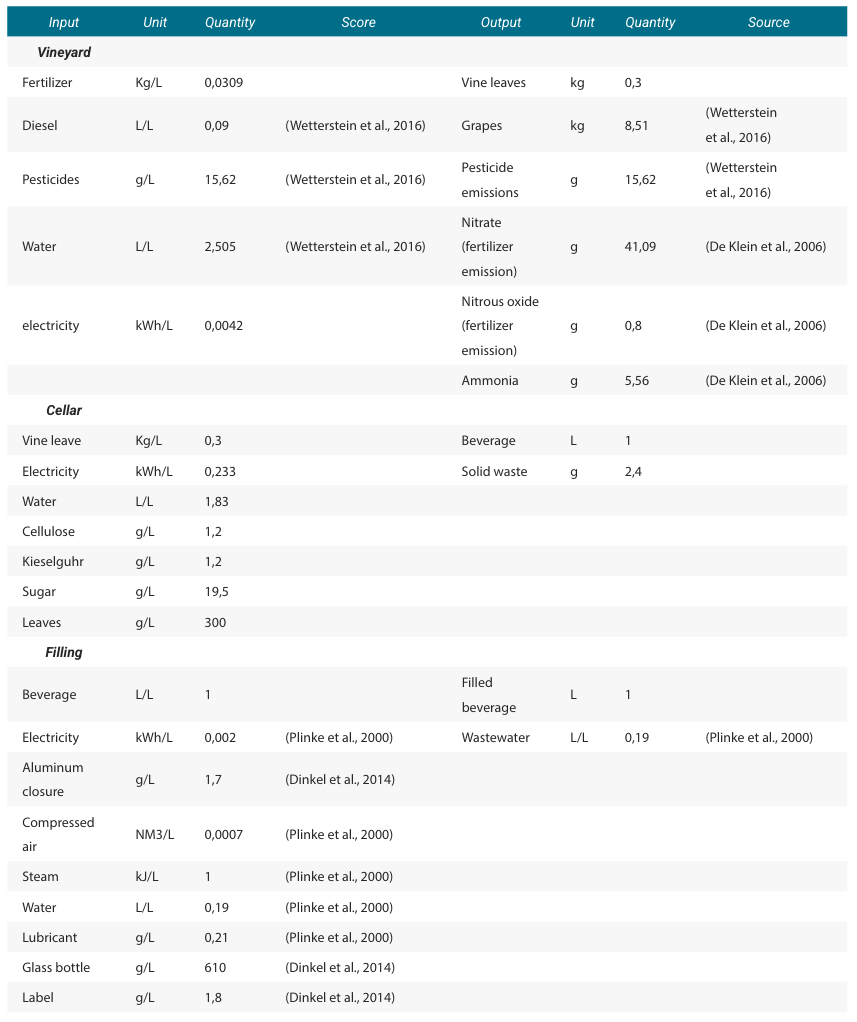
Table 3: Inventory data of the TEA to produce one liter of beverage based on scenario 1 (Greenfield)
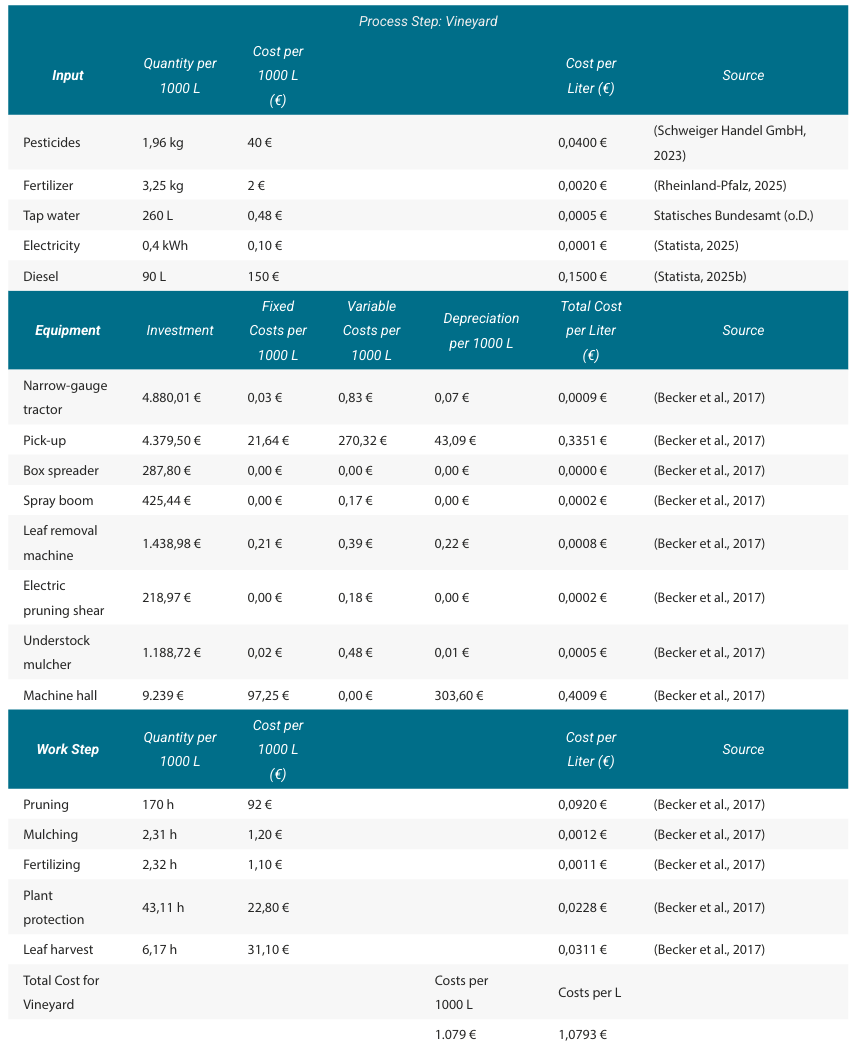
Table 3 (continued)
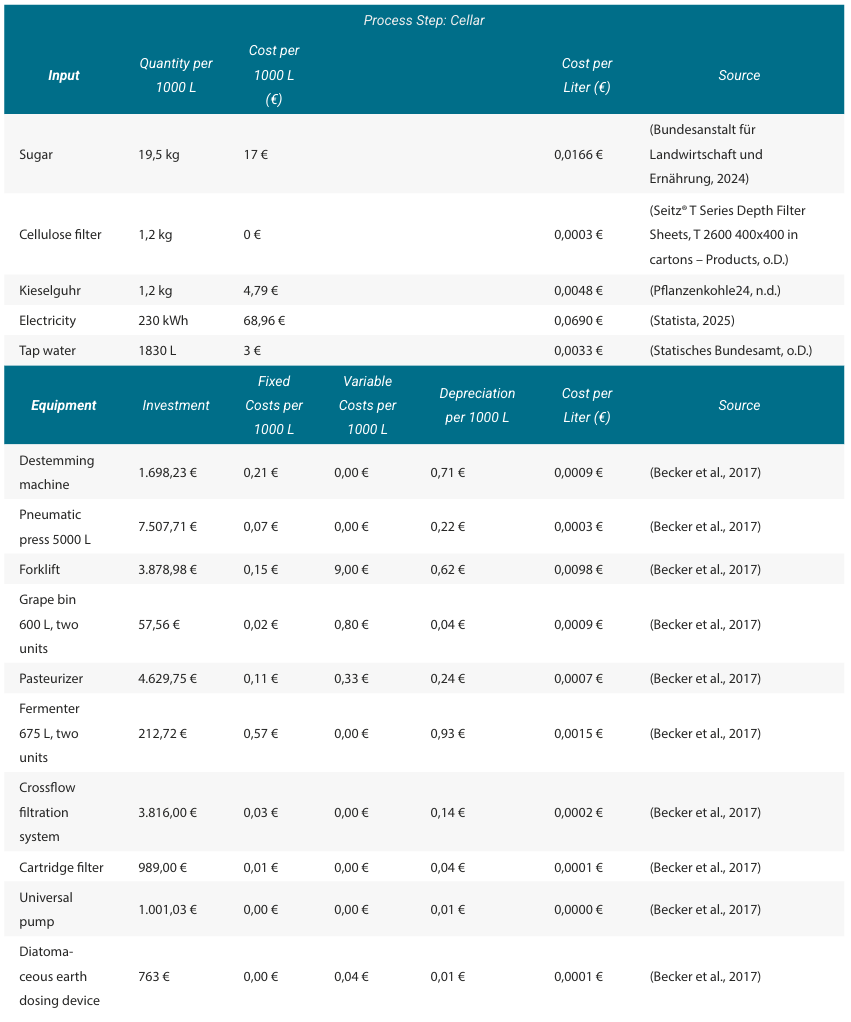
Table 3 (continued)
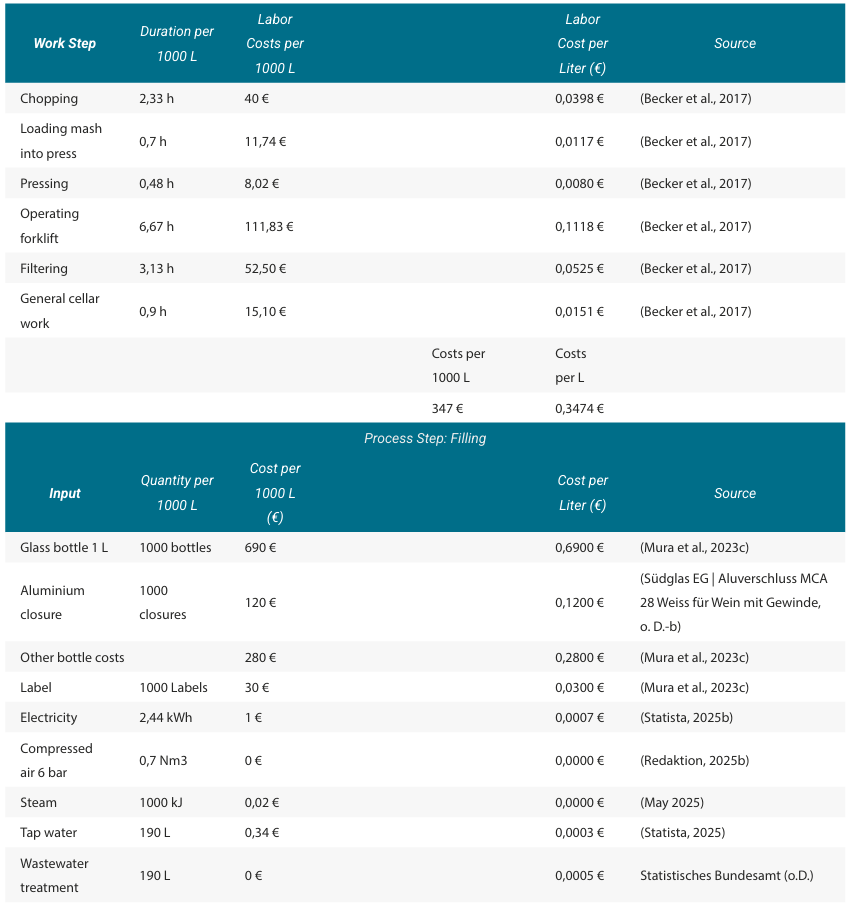
Table 3 (continued)
